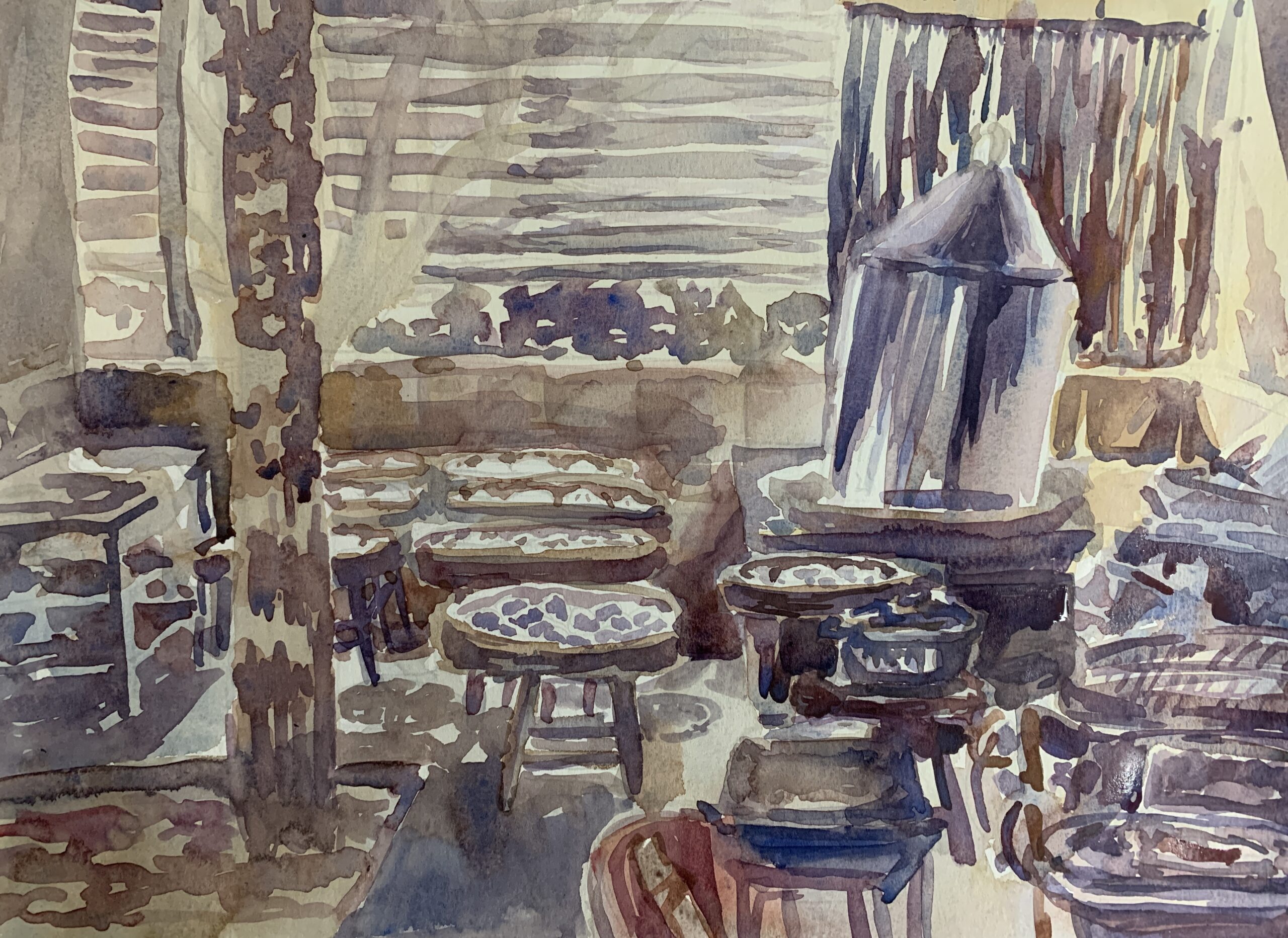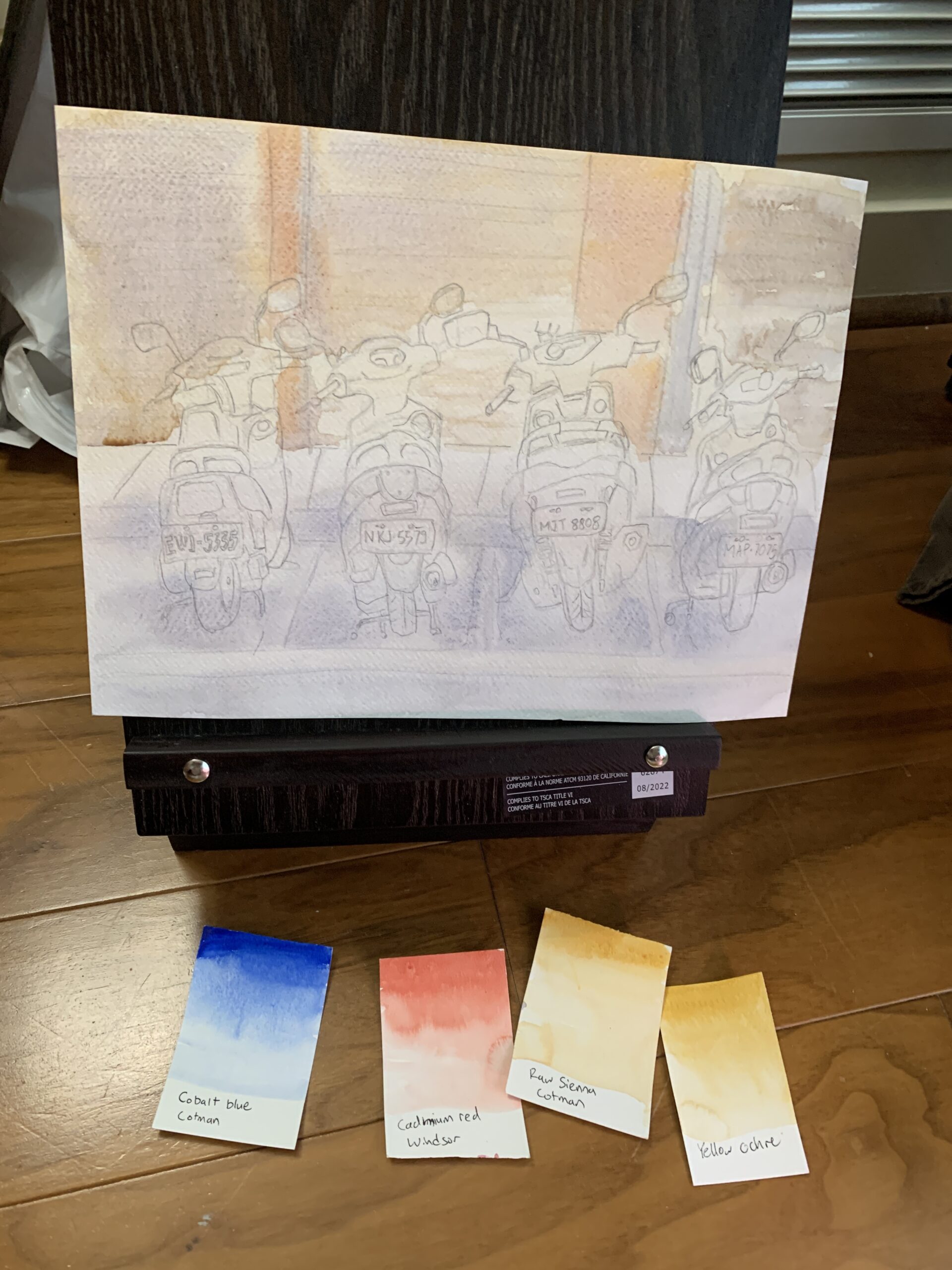During the second class at OCAD, I learned of a few more paint qualities. Certain paint colours have characteristics associated with them.
Ultramarine blue is granulated so it has a speckled quality unlike phthalo blue, which has a smooth quality. Ultramarine allows for lifting whereas phthalo blue is more of a staining colour.
Certain colours were also known as more opaque than others. My teacher suggested that if I liked raw sienna, that I should try yellow ochre, which is a more opaque paint. I quickly adopted this in a recent painting where one of the colours I put on one of the final layers adopted yellow ochre since I knew it would override the below layers.
I don’t think I have mastered the multiple layer glazing technique. This involves making one layer below and then after it fully dries, another layer is put on top, resulting in an interesting characteristic of transparency between the two. That said, it seems to me this would work better with transparent colours rather than involving an opaque one.
I looked up that there are other colours that are more transparent than opaque, such as hansa yellow and quinacridones, but oddly I do not have any in these sets.
The teacher also suggested that cooler colours should be used for shadows. So among the 6 that she had us focus on: cadmium red, cadmium yellow, and ultramarine blue makes the warm set and alizarian crimson, phthalo blue, and lemon yellow would be the cooler set. That said, between these colours, a yellow would be warmer than a blue as well, so it is all relative.
I have tried this concept of using cooler colours for shadows with some success so far. I had heard of this with landscapes in the distance but had not considered it for still life shadows. Moreover, I don’t think I thought of applying certain sets of paints as shadows rather than others of the same pigment.
As today is another day, I am looking forward to what else I will learn. I’m excited to hear some more feedback. The only downside is that there is little interaction amongst students. I had seen that this was the case amongst artists at a mini-drawing class I took at McGill. But that seems fine to me – artists become engrossed in their work when painting and that is a bit of the magic of it.

